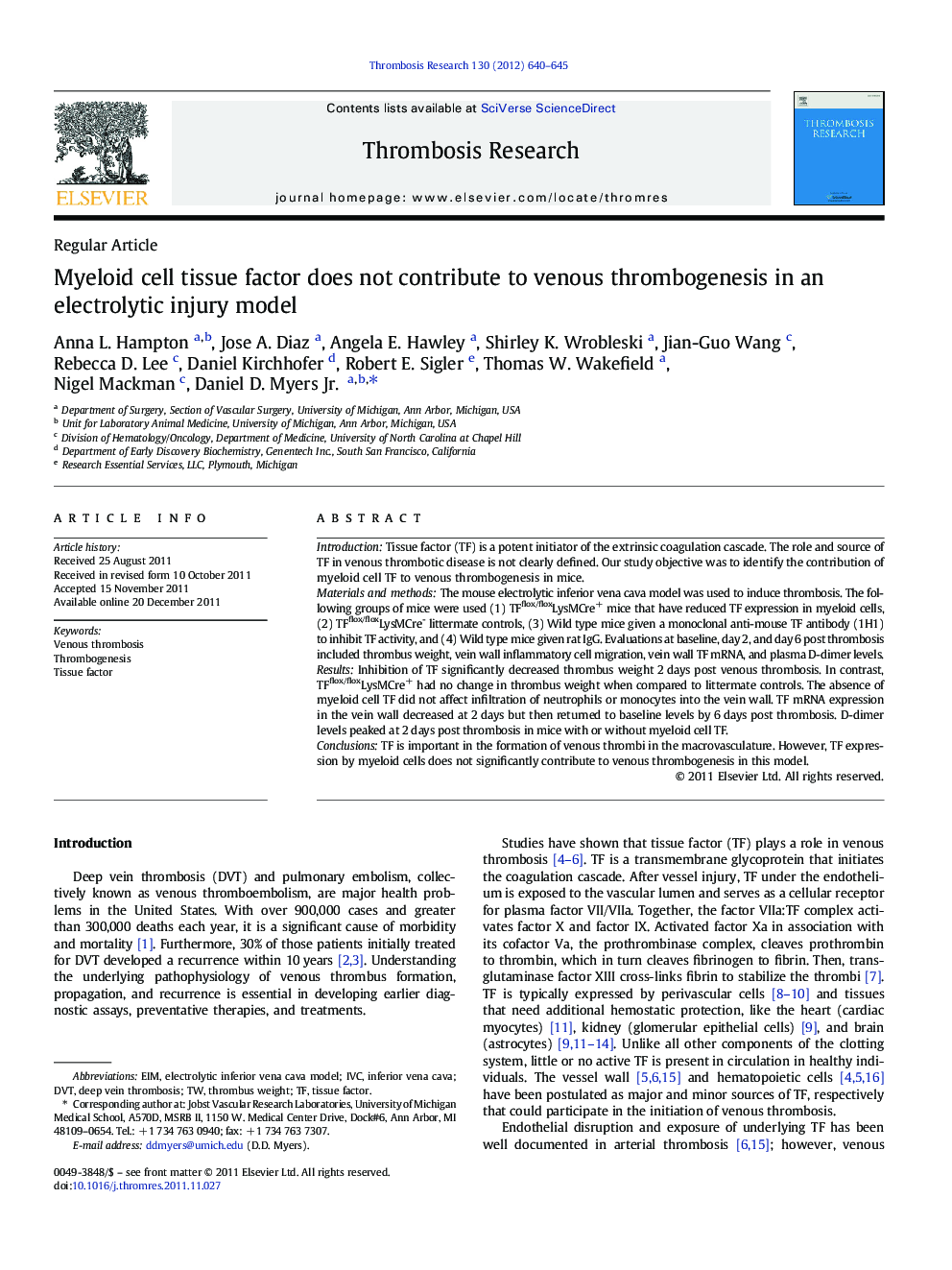| Article ID | Journal | Published Year | Pages | File Type |
|---|---|---|---|---|
| 3028202 | Thrombosis Research | 2012 | 6 Pages |
IntroductionTissue factor (TF) is a potent initiator of the extrinsic coagulation cascade. The role and source of TF in venous thrombotic disease is not clearly defined. Our study objective was to identify the contribution of myeloid cell TF to venous thrombogenesis in mice.Materials and methodsThe mouse electrolytic inferior vena cava model was used to induce thrombosis. The following groups of mice were used (1) TFflox/floxLysMCre+ mice that have reduced TF expression in myeloid cells, (2) TFflox/floxLysMCre- littermate controls, (3) Wild type mice given a monoclonal anti-mouse TF antibody (1H1) to inhibit TF activity, and (4) Wild type mice given rat IgG. Evaluations at baseline, day 2, and day 6 post thrombosis included thrombus weight, vein wall inflammatory cell migration, vein wall TF mRNA, and plasma D-dimer levels.ResultsInhibition of TF significantly decreased thrombus weight 2 days post venous thrombosis. In contrast, TFflox/floxLysMCre+ had no change in thrombus weight when compared to littermate controls. The absence of myeloid cell TF did not affect infiltration of neutrophils or monocytes into the vein wall. TF mRNA expression in the vein wall decreased at 2 days but then returned to baseline levels by 6 days post thrombosis. D-dimer levels peaked at 2 days post thrombosis in mice with or without myeloid cell TF.ConclusionsTF is important in the formation of venous thrombi in the macrovasculature. However, TF expression by myeloid cells does not significantly contribute to venous thrombogenesis in this model.
